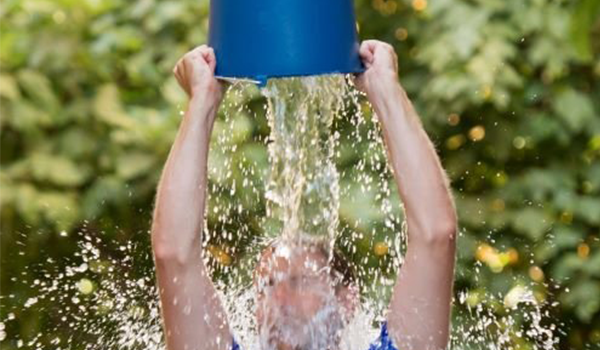Beware of Fun Fads Sweeping Social Media | Online Security | GVTC
You see them every day. The fun fads and challenges that sweep the internet overnight. They're the trending hashtags. The ice bucket challenge. Usually, it's all fun in games, but some times they can encourage reckless behavior. That's why it's always good to beware.
 So, we're here to educate you on what to look for, what to know, and what to enjoy when it comes to fun fads on social media. Let's start with the basics.
So, we're here to educate you on what to look for, what to know, and what to enjoy when it comes to fun fads on social media. Let's start with the basics.
What is a Social Media Challenge?
A social media challenge typically includes a short video of one or more people doing a specific task, accompanied by a hashtag describing the challenge (e.g. #CinnamonChallenge). The activity itself can be anything from performing a dance move (e.g. #HarlemShakeChallenge) to having ice water poured over you (e.g. #ALSIceBucketChallenge).
The big idea involves recording yourself doing an activity, posting the video to one or more of your social media accounts (along with the challenge hashtag), and then inviting your friends and followers to do the same thing. The faster and more widely a challenge gets shared, the greater the probability is that it will "go viral" within a short period of time. With the proliferation of social media platforms like Facebook, Twitter, and Instagram, popular challenges can achieve global reach within a matter of days.
What Makes a Challenge Go Viral?
While not all social media challenges take off in the same way, all successful challenges share common elements. Here are a few hallmarks of the top viral challenges:
- They're spontaneous and organic. The challenge is started and shared by an individual, not sponsored by a brand or a corporation.
- They're peculiar or unique. The activity must be novel enough to grab the attention of someone scrolling through their social media feed.
-
They're simple and specific. Whether it's posting a picture of yourself "planking" or performing a particular dance move, the instructions must be clear and the action easy to do.
When celebrities jump on a challenge bandwagon, the exposure is amplified exponentially. Not only do more people see it by virtue of a celebrity's audience, but participation also goes up because those same fans and followers then want to emulate their heroes.
Sharing Isn't Always Caring
While these rules of thumb generally hold true for successful social media challenges, what really drives people to share these challenges far and wide is the universal desire to belong. Participating in a broader movement—even if it's just for fun—can make people feel connected. Sharing their participation is a way of declaring their membership  in a larger collective, making them feel like they're part of something bigger. However, there's also a darker side.
in a larger collective, making them feel like they're part of something bigger. However, there's also a darker side.
The problem with anything that goes viral is that it's indiscriminate. There's no way to control who sees it, who attempts it, or who passes it on. This lack of oversight leaves children and teenagers particularly vulnerable to internet challenges that could result in real physical harm, either to themselves or to others.
For example, the infamous #TidePodChallenge in 2018 had kids biting into small laundry detergent packets (said to resemble candy) before spitting the soap from their mouths. Likewise, in the #CinnamonChallenge, participants had to swallow a spoonful of ground cinnamon in 60 seconds without water. Both of these challenges might have spawned an initial thrill with their audience but they carried real medical consequences for those who attempted them.
What Parents Need to Know
A dare can be irresistible, especially to a teenager. If you're a parent of a young person who spends any time on social media, you should take steps to protect them from potentially dangerous fads.
Here are three things you can do to help keep your child safe from the latest online craze:
- Talk about it. Since you can't supervise your teen at every moment, you have to rely on their judgment. Make sure they can recognize and avoid potentially dangerous behavior.
- Acknowledge the reality of peer pressure. Try to remind your teen that they are in control and don't have to do anything they don't want to, even if friends tease them for not playing along.
- Do things to disconnect. It's inevitable that phones are an extension of teens now. But more family activities equals less screen time - and fewer chances to see trending fun fads.
- Stay up to date. Knowledge is power; keep an eye on the latest online trends and how they might affect your teen—before he or she gets on board with it.
- Encourage your kids to think twice before sharing anything. Talk to them about what types of posts are appropriate and which ones are not. After all, what you share on the internet can last forever and things are never truly deleted. (Read more about Internet Safety for the Family)


